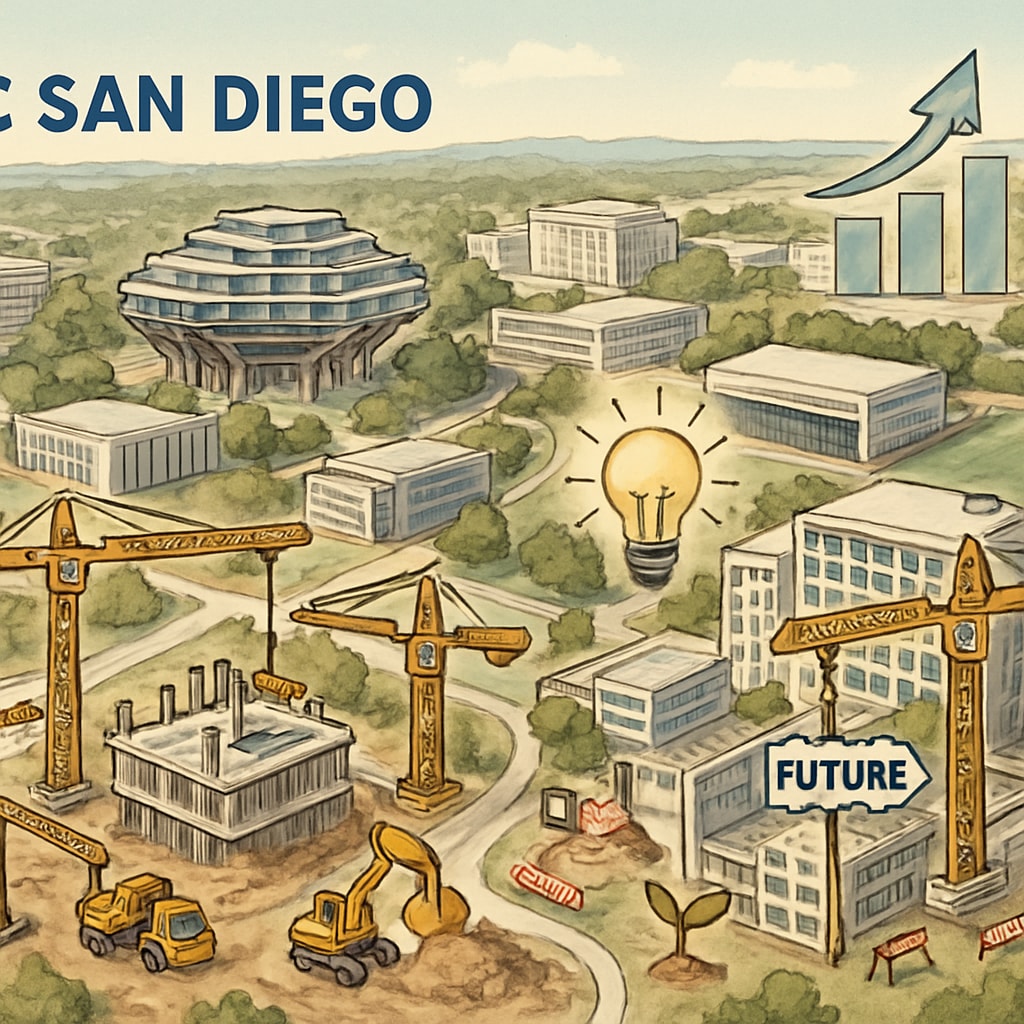UC San Diego’s enrollment expansion plan is set to redefine the landscape of higher education on the West Coast. With a vision to accommodate a significantly larger student body by 2040, this initiative will position the university as a major academic hub. However, the ripple effects of this growth extend beyond the university itself, impacting the broader educational ecosystem, particularly K12 education. As we explore the implications of this ambitious plan, it becomes clear that preparing future-ready students requires a holistic approach to education reform.
Understanding the UC San Diego Enrollment Expansion Plan
In recent years, UC San Diego has unveiled a bold strategy to increase its student population dramatically. The university aims to grow its enrollment from approximately 42,000 students today to nearly 50,000 by 2040. This expansion aligns with California’s broader objective of meeting the increasing demand for higher education and addressing workforce shortages in key industries such as technology, healthcare, and environmental sciences.
The expansion plan includes the construction of new academic buildings, residential facilities, and enhanced campus infrastructure to support this growth. Additionally, the university plans to broaden access to underrepresented groups, promoting diversity and inclusion. By doing so, UC San Diego not only hopes to improve its academic standing but also to become a model for equitable education.

Implications for K12 Education: Preparing the Next Generation
The UC San Diego enrollment expansion raises critical questions about the preparedness of the K12 education system. If the university seeks to host tens of thousands of additional students, the pipeline of qualified high school graduates must also grow proportionally. This creates both challenges and opportunities for K12 institutions nationwide.
Firstly, K12 schools must focus on equipping students with the skills needed to succeed in a competitive higher education environment. Emphasis on STEM (Science, Technology, Engineering, and Mathematics) subjects, critical thinking, and digital literacy will be essential. Secondly, schools must address issues of equity, ensuring that students from diverse backgrounds have access to the resources and opportunities necessary to reach universities like UC San Diego.
- Curriculum enhancement: K12 schools may need to align their curricula more closely with university expectations, particularly in areas such as coding, data analysis, and interdisciplinary studies.
- Teacher training: Professional development programs for educators will be vital to ensure they can deliver cutting-edge instruction.
- Equity initiatives: Programs aimed at closing achievement gaps must be prioritized, including tutoring, mentorship, and access to advanced placement (AP) courses.
As a result, the expansion of UC San Diego serves as a reminder that K12 education is a foundational component of the larger educational ecosystem. The success of this initiative depends not only on university-level reforms but also on the readiness of high schools to produce academically prepared graduates.

Challenges and Opportunities in Managing Student Growth
While the UC San Diego enrollment expansion offers numerous benefits, it also presents challenges that must be addressed. Managing such a large influx of students requires careful planning and coordination at both the university and state levels. Key challenges include maintaining academic quality, ensuring sufficient housing, and addressing environmental concerns related to campus expansion.
On the other hand, this growth presents unique opportunities to innovate in the delivery of education. For example, UC San Diego could expand its online learning programs to supplement in-person classes, offering greater flexibility to students. Additionally, partnerships with K12 schools, community colleges, and industries can create a more integrated educational pipeline, fostering lifelong learning.
Key challenges and opportunities:
- Infrastructure development: Expanding facilities while minimizing environmental impact.
- Diversity and inclusion: Creating pathways for underrepresented groups to access higher education.
- Partnerships: Collaborating with K12 schools to align educational goals.
Conclusion: A Call for Collaborative Educational Reform
UC San Diego’s ambitious enrollment expansion plan is more than just a university initiative—it is a call to action for the entire educational ecosystem. By 2040, the university aims to be a beacon of academic excellence and inclusivity, but this vision cannot be realized in isolation. K12 education must rise to the occasion, adapting to the evolving demands of higher education and preparing students for success in a dynamic world.
As we look ahead, the collaboration between universities, high schools, and other educational stakeholders will be critical. Together, we can create a future where every student has the opportunity to thrive, ensuring that growth in higher education translates into broader societal progress.
For more information on the role of higher education in shaping the future, visit Higher Education on Wikipedia or explore Education on Britannica.
Readability guidance: This article uses short paragraphs, clear transitions, and lists to summarize key points. It maintains an active voice and ensures accessibility for readers with varying expertise levels.


